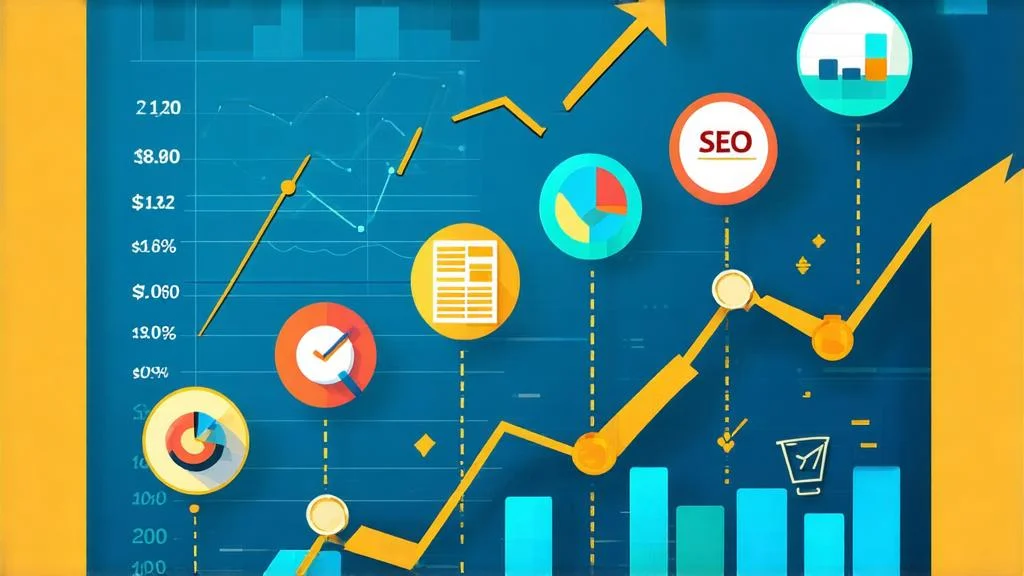
Panduan Memahami Search Intent untuk Konten Relevan & Berkualitas
Analytics · 20 Aug 2025
Pelajari cara mengenali search intent dan optimalkan kontenmu untuk trafik organik berkualitas — mulai sekarang.

SEO essentials and AI-era tactics to boost visibility, answers, and conversions for your site.
ai · 29 Oct 2025
AI is reshaping how search works, and that’s the most important thing to know right now: SEO is no longer just about keywords—it's about satisfying intent, feeding AI with clear signals, and designing content that gets picked up as direct answers. You’ll learn the core elements of on-page, technical, and off-page SEO, how to map search intent, and how AI-driven tools change keyword research. I’ll walk you through content strategies that win featured snippets and knowledge panels, practical schema and indexing advice, and measurement shifts—think SERP share and answer impressions—not just rankings. Expect concrete examples, quick checklists, and a roadmap you can apply to audits or experiments this week. Together we'll unpack generative AI best practices, how to optimize for voice and assistant-style queries, and which KPIs to track as AI influences more SERP features. Ready to update your approach and future-proof your site? Let’s dive into practical steps and mental models that help you make better decisions, faster.
Start with the essentials: SEO still rests on three pillars—on-page, technical, and off-page—but AI changes priorities. For example, Google’s AI-driven features prioritize concise, high-quality answers. That means your content needs clearer structure and authoritative context. Case study: a mid-sized publisher increased answer impressions by 45% after adding brief, scannable summary paragraphs and schema. Key on-page elements include keyword placement, meta tags, headings, and internal linking. Technical fundamentals are site speed, mobile-first design, crawlability, and XML sitemaps. Off-page remains about authority: backlinks, citations, and partnerships. Practical example: optimizing an FAQ into short Q&A blocks led to a featured snippet and 30% lift in organic clicks within two months.
| Element | Action |
|---|---|
| Keywords | Map to intent, use in title and H1 |
| Meta Tags | Write unique, action-focused descriptions |
| Speed | Compress images, use CDN |
| Mobile | Responsive layouts, touch targets |
| Sitemaps | Keep updated, submit to Search Console |
Understanding search intent is your competitive advantage. Categorize queries as informational, transactional, navigational, or conversational. Example: “best budget laptop” is transactional; “how do CPUs work” is informational; “site:example.com login” is navigational; “Hey assistant, summarize laptop options” is conversational. Use AI tools for predictive analytics—forecast trending queries and seasonal shifts. Case: an e-commerce site used predictive keyword tools to plan content for a product launch and saw 22% higher organic traffic during launch week. Optimize for long-tail and voice queries by writing natural-language answers and including conversational Q&As.
| Query Type | Example | Optimization |
|---|---|---|
| Informational | "what is semantic search" | long-form guide, internal links |
| Transactional | "buy wireless earbuds" | product pages, reviews, schema |
| Navigational | "twitter login" | clean site structure, brand markup |
| Conversational | "best lunch spots nearby" | local schema, short answers |
| Long-tail | "how to reduce image size without quality loss" | step-by-step guide |
Content must signal expertise, experience, authoritativeness, and trustworthiness (E-E-A-T). Build topical authority by creating clusters: pillar pages plus deeply linked subtopics. Formats that win AI answers include concise summaries, numbered lists, tables, and structured Q&As. Use generative AI to draft, but always human-edit for nuance, accuracy, and voice. For example, a data team used AI to generate baseline drafts, then added expert annotations; the edited pieces outperformed purely AI drafts by engagement. Be mindful of originality and detection risks—cite sources, include fresh analysis, and surface primary data when possible.
| Format | Why it works |
|---|---|
| Q&A | Matches voice queries and snippets |
| How-to | High engagement, step clarity |
| Comparison | Transactional intent, high CTR |
| Data study | Unique insights, linkable asset |
| Summary blocks | Good for featured snippets |
Structured data and schema are non-negotiable now. They feed knowledge graphs and help assistants pull facts. Implement FAQ, Product, Article, and Breadcrumb schema where relevant. Zero-click results and featured snippets can lower clicks but raise visibility—optimize by offering clear “read more” hooks and structured content to encourage clicks. Crawl budget matters more when you scale AI-generated pages; prioritize canonicalization and noindex low-value pages. Example: a news site used selective noindexing for thin pages and saw crawl efficiency increase by 38%, with stable rankings.
| Technical Area | Best Practice |
|---|---|
| Schema | Use JSON-LD, validate in Rich Results Test |
| Indexing | Robots.txt rules + XML sitemap hygiene |
| Performance | Lazy load, optimize assets |
| Site Architecture | Shallow depth for key content |
| AI pages | Quality checks, avoid mass thin pages |
Traditional rank tracking is still useful, but expand KPIs: SERP share, answer impressions, CTR from snippets, time-to-answer, and engagement metrics like scroll depth. Use tools that combine AI and SEO: content optimization platforms, predictive keyword tools, and log-file analysis for crawl data. Practical roadmap: start with an audit, prioritize quick wins (speed, meta fixes, schema), run controlled experiments, and establish governance for AI content. Example roadmap steps: 1) baseline audit, 2) implement schema for top 50 pages, 3) test AI-assisted drafts with human edits, 4) measure answer impressions and CTR, 5) iterate monthly. Build a checklist for continuous adaptation and set a cadence for experimentation and content pruning.
| Step | Action |
|---|---|
| Audit | Content, technical, backlinks |
| Prioritize | Speed, schema, top-performing pages |
| Experiment | AI drafts vs human edits |
| Measure | Answer impressions, CTR, engagement |
| Govern | Quality rules, content lifecycle |
We covered the practical shifts you need: focus on intent, use AI to augment—not replace—human expertise, and instrument for new KPIs like answer impressions and SERP share. Start with an audit, add schema, and create short, scannable answer blocks to win featured snippets and assistant responses. Run experiments: A/B AI-assisted vs human-authored pieces, measure CTR and engagement, then scale what works. Keep a governance playbook for AI content and prune low-value pages to protect crawl budget. Your next three steps: fix page speed and mobile issues, add targeted schema for top pages, and map queries to intent with content types matched. Remember: SEO success in the AI era is iterative—small, consistent improvements beat one-off hacks. If you want, I can help you build an audit checklist or run a quick content experiment for dedensembada.com to prioritize high-impact changes.

Analytics · 20 Aug 2025
Pelajari cara mengenali search intent dan optimalkan kontenmu untuk trafik organik berkualitas — mulai sekarang.

Analytics · 13 Nov 2024
Discover how I transformed my SEO game using key performance metrics. Join me as I break down essential KPIs and share real-life wins in SEO analytics.

Analytics · 13 Nov 2024
Unlock the secrets of SEO analytics with my easy guide where I share how I break down data like a pro to boost my website's visibility. Let's dive in!

Analytics · 25 Apr 2025
Tingkatkan peringkat SEO dengan Data analytics untuk SEO dan emukan strategi efektif yang terbukti berhasil!

Analytics · 13 Nov 2024
Discover how I unlocked my SEO performance metrics to boost my results and understand what a performance score really means in the world of SEO analytics.

Analytics · 12 Dec 2025
modern data teams guide: roles, lifecycle, tools, governance, hiring — practical tips to build better data teams

Analytics · 13 Nov 2024
Unlock the secrets to effortless SEO with my favorite analysis tools that make optimization feel like a breeze. Join me in exploring how to boost your online presence!

Analytics · 13 Nov 2024
Unlock the world of data analytics with my simple guide to the 7 essential steps of data analysis. Let’s navigate the basics together and make sense of the numbers!

AI · 04 May 2025
Temukan contoh prompt AI untuk SEO yang dapat meningkatkan kualitas konten Anda dan mendatangkan lebih banyak pembaca.

Analytics · 13 Nov 2024
Unlock the world of data analytics with my easy guide to the 5 essential steps. Join me as I break it down simply, just like choosing the perfect recipe!